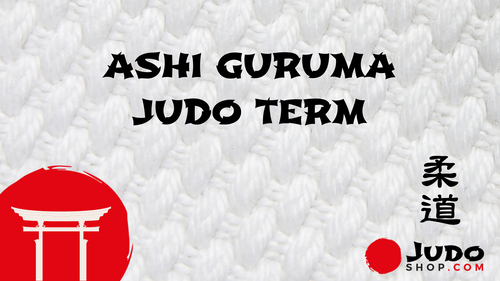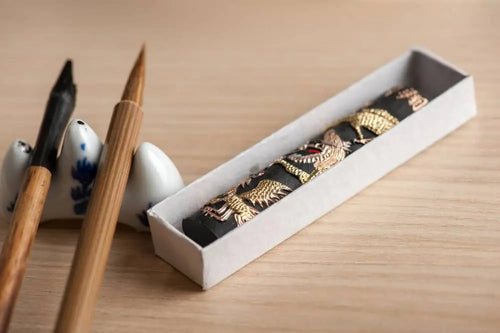Ashi Hara Gatame - Judo Term Explained
Share

Ashi Hara Gatame is a specialized technique in the martial art of judo, combining leg control, abdominal pressure, and arm manipulation. This article will explore the meaning, application, and significance of this judo term within the broader context of the sport.
Understanding the Term Ashi Hara Gatame
Ashi hara gatame is a Japanese term meaning "leg stomach arm lock" in English. To break down the components:
- Ashi (足): Means "foot" or "leg"
- Hara (腹): Refers to the "stomach" or "abdomen"
- Gatame (固): Translates to "hold" or "lock"
This terminology provides insight into the nature of the technique, suggesting a complex move that involves the practitioner's leg, the opponent's stomach area, and an arm lock.
Classification and Application of Ashi Hara Gatame
Ashi hara gatame falls under the category of newaza (寝技), or ground techniques, in judo. It is specifically a type of kansetsu-waza (関節技), which refers to joint locking techniques.
These techniques are designed to control opponents by applying pressure to their joints, often forcing them to submit or be at risk of injury.
In the execution of Ashi Hara Gatame, the judoka (judo practitioner) likely uses their leg to apply pressure on the opponent's abdomen while simultaneously securing an arm lock.
This combination of actions creates a powerful and potentially painful hold that can be used to control or submit an opponent during ground grappling.
Context in Judo Training
Judo, founded by Jigoro Kano in 1882, emphasizes the principle of maximum efficiency with minimum effort. Techniques like ashi hara gatame exemplify this philosophy using leverage and body positioning to overcome potentially stronger opponents.
In judo training, practitioners learn a wide array of techniques, including:
- Nage-waza (投げ技): Throwing techniques
- Katame-waza (固技): Grappling techniques
- Atemi-waza (当て身技): Striking techniques (though rarely used in modern judo competitions)
Ashi hara gatame, as a ground grappling technique, would typically be practiced during newaza training sessions. Judoka must learn not only how to apply the technique but also how to defend against it and potentially counter it.
Importance in Judo Vocabulary
Understanding terms like Ashi Hara Gatame is crucial for judo practitioners for several reasons:
- Technical precision: Knowing the exact terminology allows clear communication during training and competitions.
- Cultural appreciation: Judo's Japanese origins are reflected in its terminology, and learning these terms helps practitioners connect with the art's cultural roots.
- Competitive edge: In competitions, quick recognition of techniques by their proper names can aid in strategic decision-making.
- Rank advancement: Knowledge of judo terminology is often part of the criteria for advancing through the belt ranks.
Safety Considerations
As with all joint locking techniques in judo, ashi hara gatame must be practiced cautiously. Proper supervision and gradual progression in training are essential to prevent injuries.
Partners must be aware of their limits and communicate effectively, using the universal tap-out signal to indicate submission when necessary.
Conclusion
Ashi hara gatame, the leg stomach arm lock, is a testament to the complexity and depth of judo techniques. While it may not be as well-known as some throwing techniques, it represents the intricate ground game that is an integral part of judo.
As practitioners continue to study and refine their understanding of such techniques, they not only improve their physical skills but also deepen their appreciation for the rich tapestry of knowledge that makes up the art of judo.
By exploring terms like ashi hara gatame, judoka can gain a more comprehensive understanding of their art, enhancing both their technical proficiency and their connection to judo's philosophical and cultural foundations.
For those looking to expand their judo lexicon, our comprehensive list of judo terms can be an indispensable tool for learning and teaching.
Related Posts
-

Kayla Harrison's Judo Journey - Judo Champion Turned MMA Powerhouse
Kayla Harrison is a groundbreaking American judoka who made history by becoming the first American woman to win an Ol...
-

Judo Atlanta - List of Judo Clubs in Atlanta area
In Atlanta, you can find excellent judo clubs such as Atlanta Judo Midtown and Black Ice Fitness where you can train...
-

Guram Tushishvili Disqualified - JUDO DRAMA with Teddy Riner
Guram Tushishvili Disqualified - Unsportsmanlike Behavior to French Judoka Teddy Riner Leads to Disqualification fro...
-

Yeldos Smetov - Judoka Profile
Yeldos Smetov, a name synonymous with excellence in judo, has carved out an illustrious career that stands as a beac...
-

Judo Olympics 2024 Results - Gold, Silver, and Bronze Medalists
The Judo Olympics 2024 Results are eagerly anticipated as the Paris Games approach, promising a thrilling display...
-

Judo For Self Defense - Here Is Why Is Judo Best For Self-Defense
Judo For Self Defense packs a punch. This martial art, born in Japan, turns attackers' strength against them. No nee...
-

Ashi Gatame - Judo Term Explained
Ashi Gatame is a Judo technique referring to a kansetsu-waza (joint lock) where one uses their legs to immobilise ...
-

Judo Olympics 2024: Highlights, Athletes, and Schedules
Judo Olympics 2024 enthusiasts, mark your calendars! From July 27 to August 3, the Grand Palais Éphémère near the Eif...
-

Ashi Garami - Judo Term Explained
What does "Ashi garami" mean in Judo? "Ashi garami" (足緘) is a Japanese term used in Judo that literally translates t...
-

Ashi - Judo Term Explained
Ashi is term in Judo, referring to a leg or foot and category of judo techniques designed to unbalance and throw an ...
-

Anza - Judo Term Explained
The term Anza in Judo (安座) embodies a significant practice beyond merely sitting; it signals a deep respect and disc...
-

Ashi Guruma - Judo Term Explained
Ashi Guruma is a Judo term rooted in the martial art of Judo, which translates from Japanese as 'leg wheel'. This ju...
-

Judo vs BJJ? Of course Judo! Judo is better!
Welcome to Judoshop.com, the premier destination for judo enthusiasts worldwide. Here, we cater to beginners and vet...
-

Hantei Judo Term Explanation
Contrary to popular belief, the term 'Hantei' in Judo is not just a simple decision-making process. It holds the p...
-

Dojo Meaning (updated 2023)
Dojos, places of immersive learning and meditation, hold great significance in martial arts. Derived from the Japane...
-

Hajime - Judo Term Explained
Ready to learn about Hajime in judo?It's all about using throws, pins, and joint locks on the mat. With the command ...
-

Ayumi Ashi - Judo Foot Work Explained
Are you ready to step into the world of Judo and master the art of Ayumi Ashi - 歩み足? This fundamental footwork techn...
-

Bushido Explained
Bushido, the traditional code of ethics followed by samurai warriors in feudal Japan, is a subject that fascinates ...
-

Ippon - Judo Term Explained
Imagine stepping onto the mat and feeling the adrenaline rush through your veins. In the world of judo, one ultimate...
-

Budo - Term Explained
In a world full of chaos and conflict, one finds solace in the ancient art of budo. Contrary to popular belief, budo...
-

Arigatou - Judo Term Explained
Do you ever wonder about the true meaning behind the Japanese word 'Arigatou'? Well, wonder no more! 'Arigatou' is a...
-

Aka Obi - Judo Term Explained
The aka obi, a red belt worn in Judo, is a prestigious symbol of expertise. Typically reserved for those holding a 9...
-

Why Are There 2 Bronze Medals In Judo
Judo is a unique sport that gives two bronze medals in each weight class. Many people wonder why this is done. To fi...
-

Ai Yotsu - Judo Term Explained
In the world of Judo, a term holds immense significance - Ai Yotsu. This grip, characterized by an intense and intim...
-

Is Judo Dangerous - Unveiling the Shocking Truths Behind this Ancient Martial Art
With its powerful throws and complex grappling techniques, one might wonder, "Is judo dangerous?" Yes, judo can po...
-

Is Judo The Toughest Sport - Unraveling the Grit and Grace of the Gentle Way
Judo, known as the Gentle Way, may seem like a paradoxical name for a sport, but don't let that fool you. While Ju...
-

Judo Terms - Complete List Of Judo Terms
Judo terms are the foundation of this martial art...
-

English to Japanese Kanji and Hiragana translations
Are you looking for an English to Japanese Kanji translation? Here you can find more than 30 examples of Kanji and ...




























